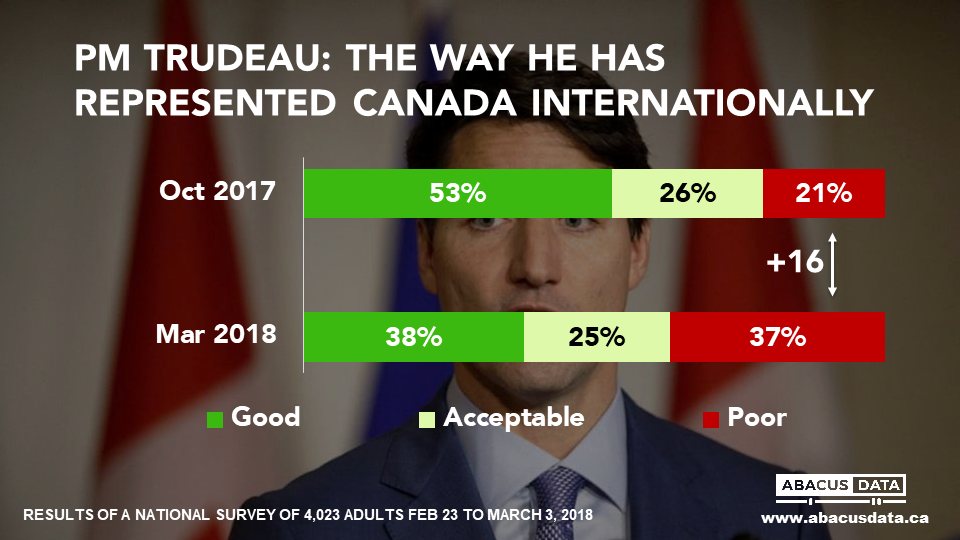Analysis: Carbon pricing can stand a little more help from its friends
The political debate about climate change has become highly charged by the advocacy of those least concerned about climate change and those most convinced of the urgency of the problem.
But while the charges and counter-charges among these small subsets of the population rage, Canadians, for the most part, won’t align either with the “there’s no problem here” or “radical action now” propositions.
This memorandum is intended to offer a perspective on the results obtained in our survey for Canada’s Ecofiscal Commission and influenced as well by from more than 20 years of research into how Canadians consider these issues.
• The consensus that the climate is changing is broad (60%) and stable, but not universal. Almost a third think natural causes may be to blame for any climate change, and for many of these people, a debate about what to do about it seems futile, since they presume nothing can really be done to reverse these patterns. Only a small number of people deny that the climate is changing.
• What’s left is a situation where roughly six in ten Canadians observe warming, believe it to be caused by humans, and feel that humans should do more to try to reverse. They foresee severe consequences if nothing is done, including risks to human health, rising costs, and forced migration.
However, they do not all agree on what timetable for action is necessary to avert these disasters, what actions will help the most at the least cost, or the degree to which technology might provide solutions that don’t exist today and allow us to avoid expensive and disruptive dislocation.
The nature of most people is to look for the path of least cost and inconvenience, including when it comes to what to do about climate change.
• The nature of most Canadians is to embrace the centre, to favour pragmatic solutions over ideological-sounding proposals, and to look for ways to accomplish what needs to be done through consensus and compromise rather than polarization, or zero-sum politics.
At various times in the course of the debate about climate change, expert audiences have found themselves having intense debates about choices that the average citizen may be paying much less attention to.
This was the case with the Kyoto Accord, pretty much every target that has been debated and agreed to ever since, and it has been true for the last few years about the subject of carbon pricing.
This can create a widening gap between those who believe in a specific policy solution and those who believe in the goal but aren’t sure about the specific solution. Which, more or less, is what we see today in our data about carbon pricing. Upcoming elections risk turning into, for some voters anyway, a referendum style choice between on the one hand:
• Those who favour ambitious and rapid climate action; and
• Those who deny the need for climate action, plus those who favour climate action but are hesitant about whether carbon pricing is a good solution, plus those who fear cost-of-living consequences of any tax, plus those who fear direct economic downsides of this policy.
The public opinion math for carbon pricing is challenging, but the problems have less to do with opposition among those who deny the climate is changing. A bigger problem may lie in the gap between the most fervent climate mitigation advocates and the bulk of voters who support action, but with some qualifications.
Consider the following as part of the context:
• 74% say taking action to solve climate change should be a high priority, but all 13 other items tested were considered higher priorities, or priorities by more people. The left and the right, (small but vocal subsets of the population) disagree markedly on the priority which should be attached to climate action. And so elected policy makers experience criticisms borne of disappointment and fear from those on the left and attacks borne of economic anxiety from those on the right, all the while knowing that most people prefer a middle course.
• By a wide margin, people would prefer governments to put more rather than less emphasis on reducing greenhouse gas emissions. But “doing more” doesn’t necessarily equate to “taxing carbon”. More are drawn towards ideas that seem less painful, such as “rules and regulations” or, “subsidies to encourage the adoption of low carbon technologies”. The existence of alternatives allows some to imagine that there might be a better way to reduce emissions than to increase their cost of living or cause serious disruptions in the economy.
• Moral arguments about the obligation to fight climate change carry some weight with most people, but on their own are insufficient to create so much momentum on this issue that people will support any and all proposed solutions. The moral argument has been evident for decades, and a good number of people remain hesitant about the pace of a shift to renewable energy or the need for a tax on carbon.
Within this context, carbon pricing as a policy instrument cannot count solely on “helping winds” such as fear of climate change and the moral imperative to achieve political acceptance. Advocates would be prudent to consider how to broaden and strengthen public support. The data in this study provide some clear signals about how this can be done.
• A huge majority feel it is a good idea for the economy to transition to a reliance on lower carbon energy sources, including 68% of Albertans who say this would be good for their provincial economy.
Thus, describing an idea intended to create “financial rewards to shift to an economy powered by renewable energy” is bound to be less controversial than “taxing your carbon polluting behaviour”.
• The fiercest advocates of carbon pricing sometimes criticize even the proposal on the table today as too little, too late. But with 75% of Canadians saying that a transition must take care to limit the impact on jobs and the cost of living, this way of advocating for carbon pricing is unpersuasive, and likely counter-productive.
People are far more likely to embrace a carbon price if they think it is designed to balance the competing priorities they are concerned about, rather than to prioritize one objective above all the rest. They are far more likely to wander away from the idea if advocates of climate action cannot agree among themselves on what will work.
• Development of Canada’s oil and gas resources is obviously the hot part of this debate. While most people (60%) say we should continue to develop these resources while using carbon pricing and other measures to transition to a lower carbon future, 40% feel we must greatly slow or stop development. Even NDP voters are evenly divided (55%-45%). Younger and older voters see this somewhat differently, and Quebec and Alberta voters are 33 points apart.
What this tells us is that when carbon pricing is employed as a rhetorical argument against Canadian oil it produces polarization. When characterized as an incentive to accelerate transition the opposite occurs.
• For those who feel this debate has fully matured with the public, the data in this study provide a sobering reminder of the degree to which many policy debates happen with only passing interest by the public. A majority of people say they don’t understand what carbon pricing is. The plurality doesn’t know whether their province has a carbon price. In Ontario, only 30% know that carbon is priced; in Quebec, only 20%.
• In addition to being uncertain about whether carbon taxes are currently in place, many people are suspicious about the motivation: 42% think the point is to raise tax revenue – and those who see it that way are twice as likely to be against the idea.
• A considerable number of people (47%) have doubts about whether the theory of carbon pricing will work in practice – fearing it will only increase the cost of living and energy use won’t change. Those living in provinces with carbon pricing are as likely to feel that it has increased the cost of living as to believe it has resulted in reduced emissions, in some cases moreso.
Carbon pricing, despite these challenges, is far from a dead idea, politically. Just under half (46%) say it’s a good idea, compared to 22% who say it’s a poor idea. The 33% who hang in the balance currently say they consider carbon pricing to be an “acceptable idea”.
Taken together, the challenges facing carbon pricing come down to four questions.
1. Is it part of an agenda of radical/stressful change or part a careful transition strategy?
2. How can we be sure it will work the way it is intended to?
3. Will it be implemented in a way that strengthens or weakens our economy?
4. Could it turn out to be just another way for me to pay more tax to governments?
Making a successful case for this policy idea is not about debating whether the climate is changing, whether something should be done about it, or whether a shift to cleaner energy economy is a good idea. Instead, the research shows that this idea will rise or fall based on whether the 33% in the balance believe carbon pricing is:
– Part of a broader plan of action to deal with climate change
– Is the least costly and most efficient way to shift energy use
– Will not turn out to be a tax grab, and
– Is connected to the goal of a measured transition, rather than a radical disruption that could cause serious job losses and increases in the cost of living.
There’s more!
Review the full poll and additional content from Canada’s Ecofiscal Commission here: https://ecofiscal.ca/carbonpricingworks




















































